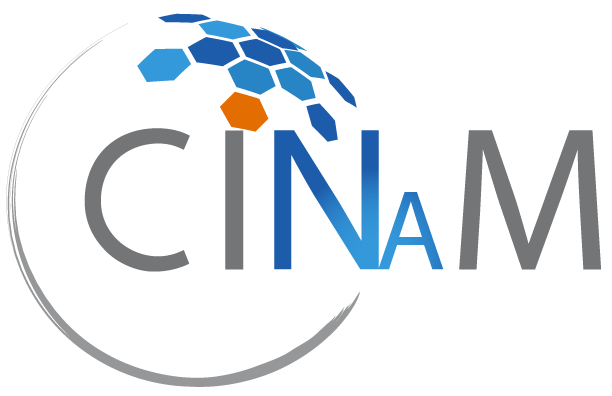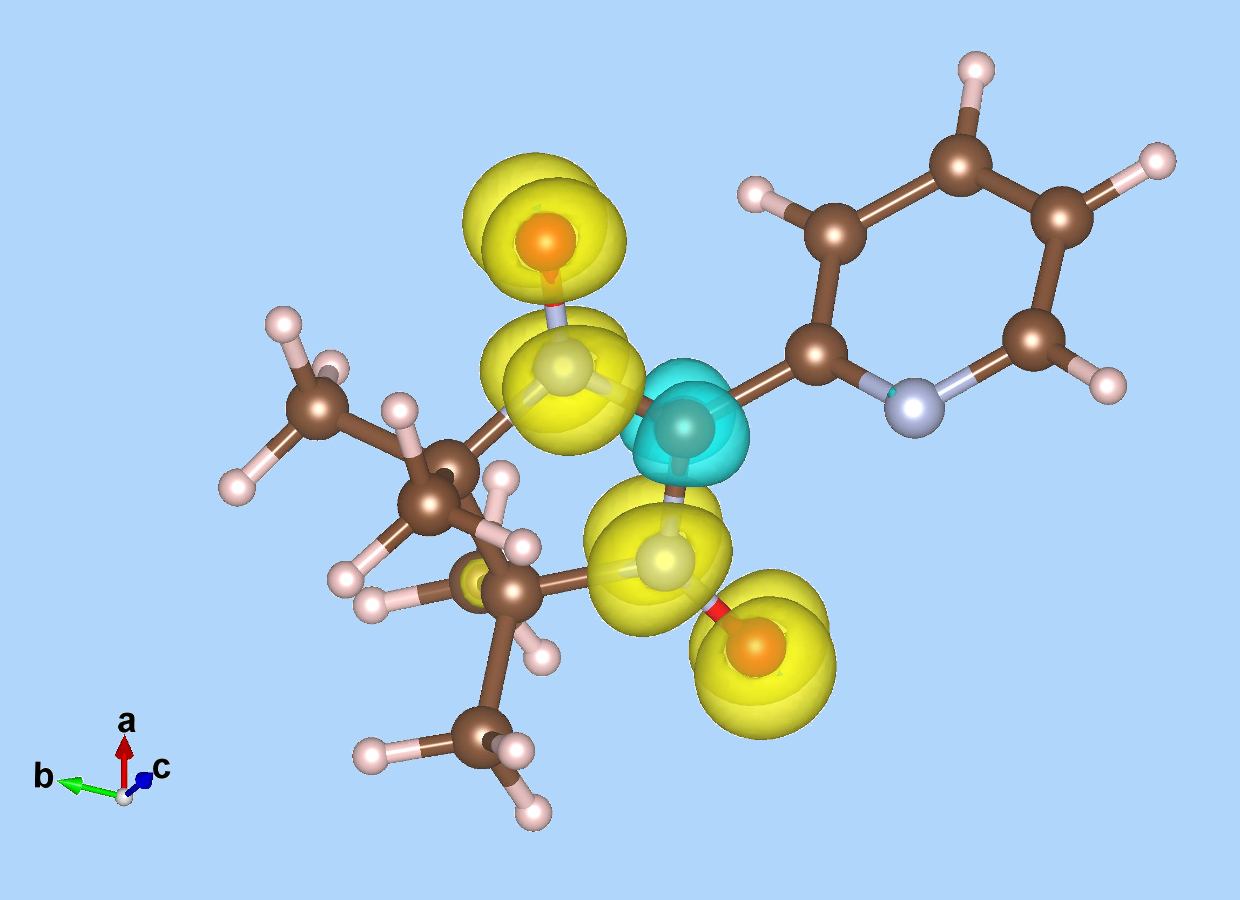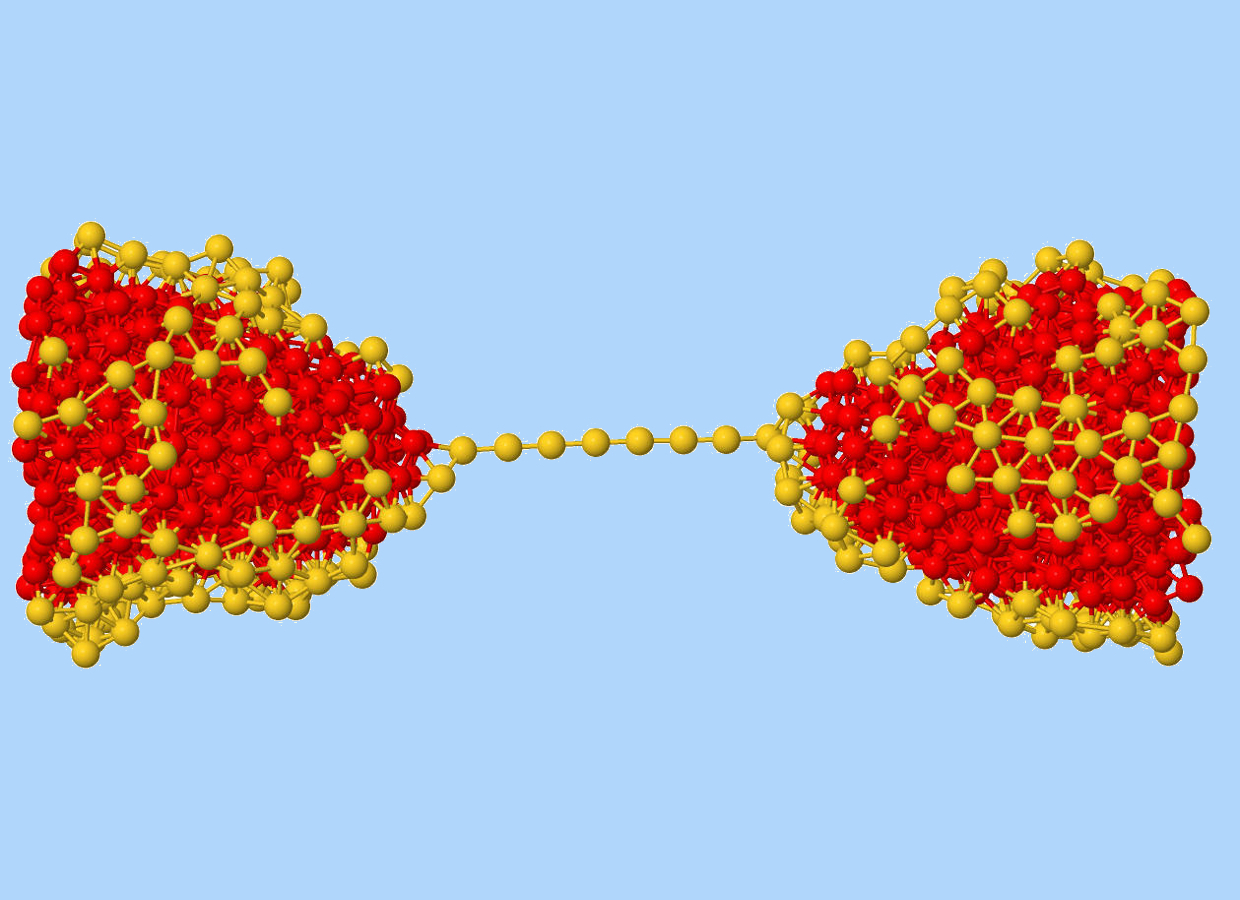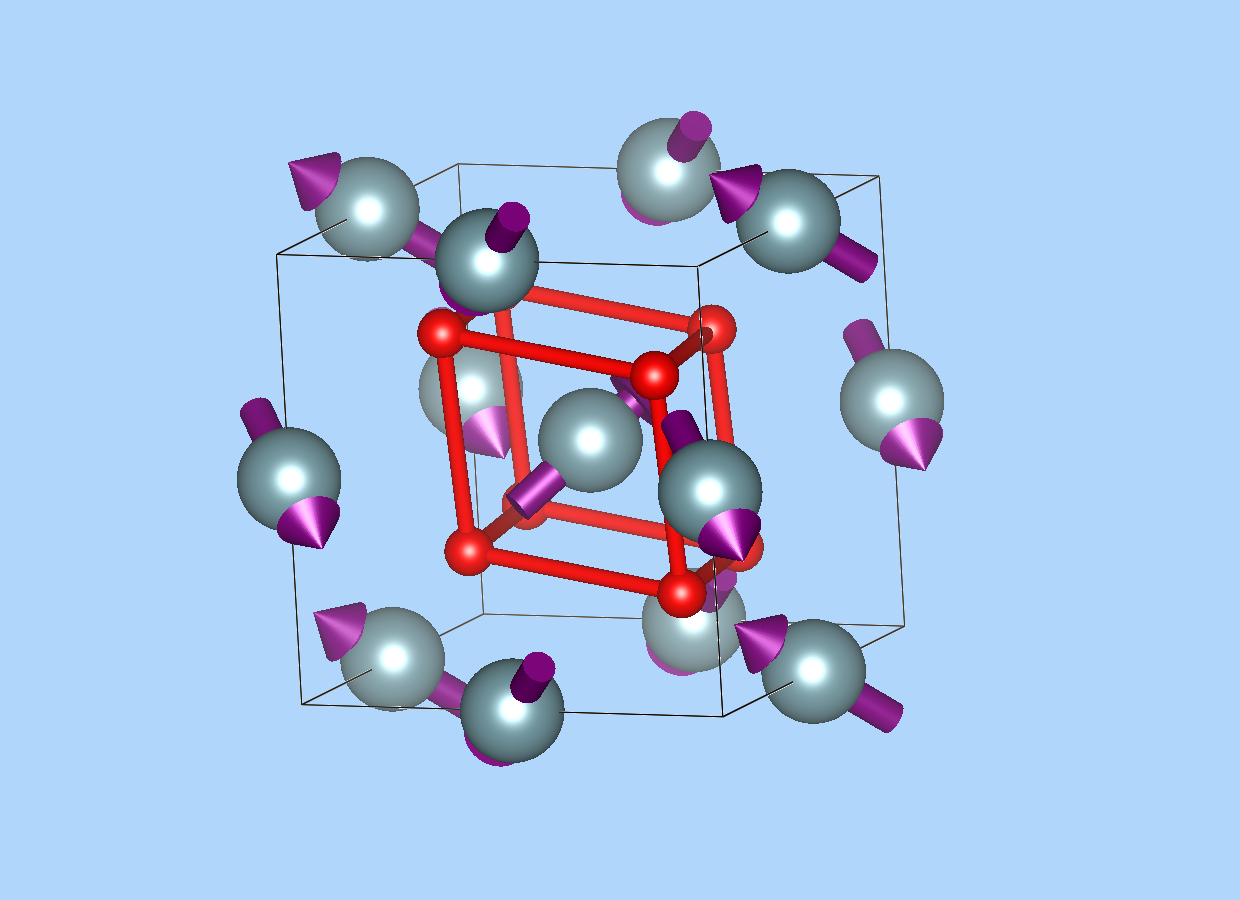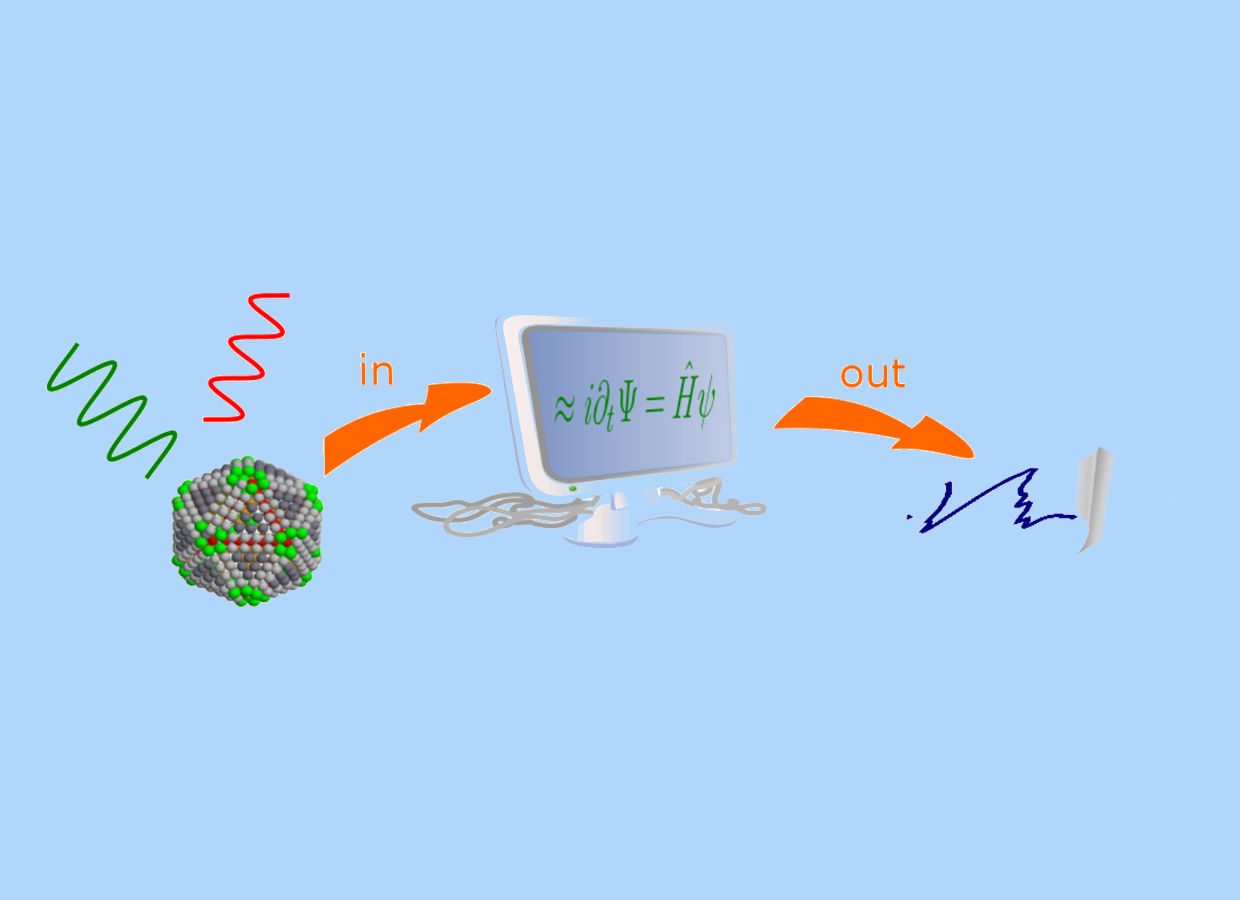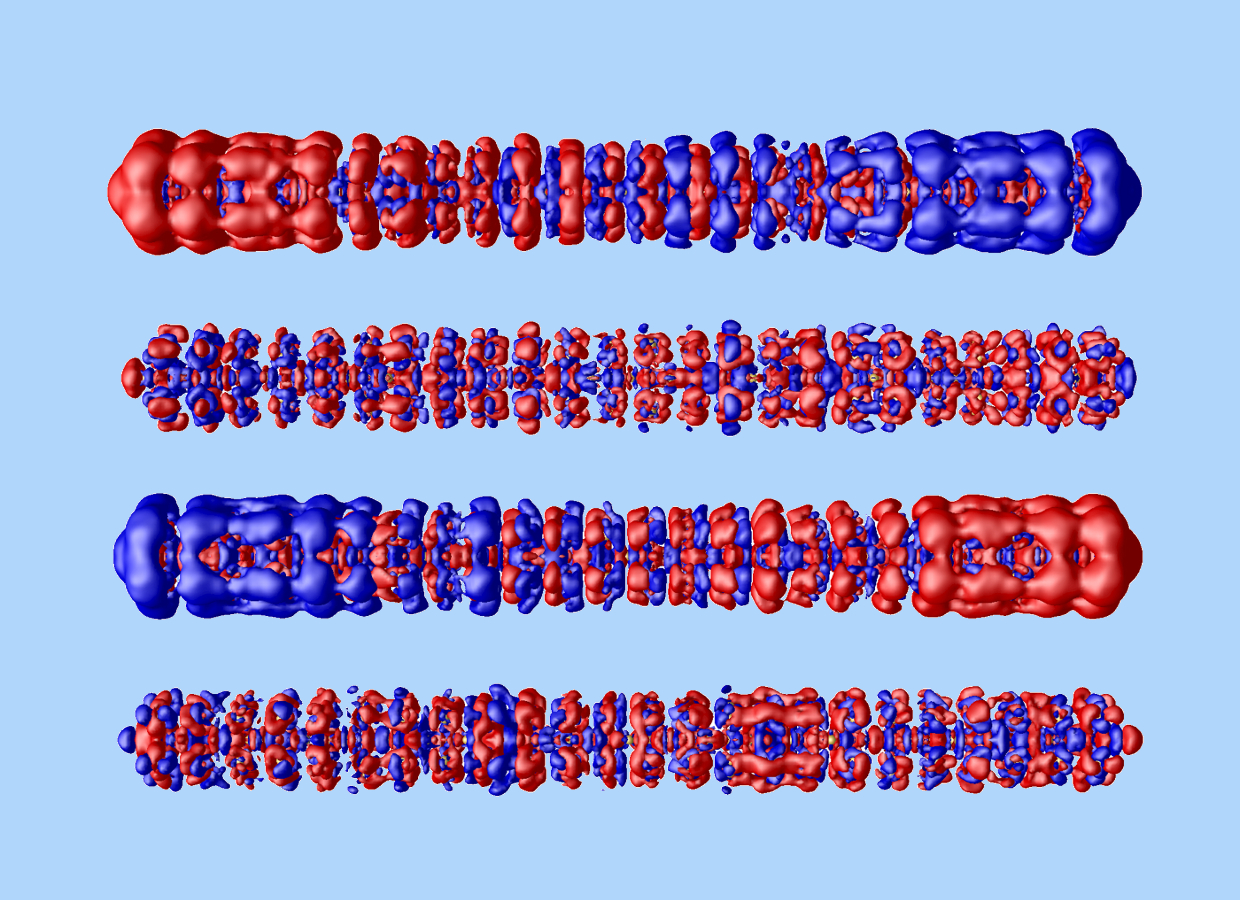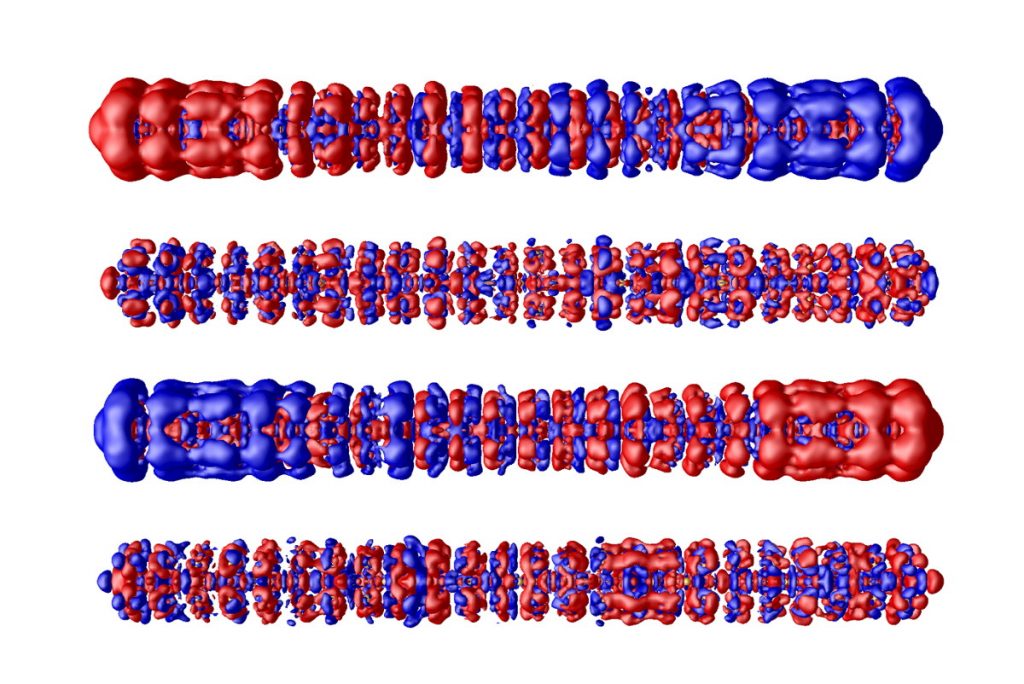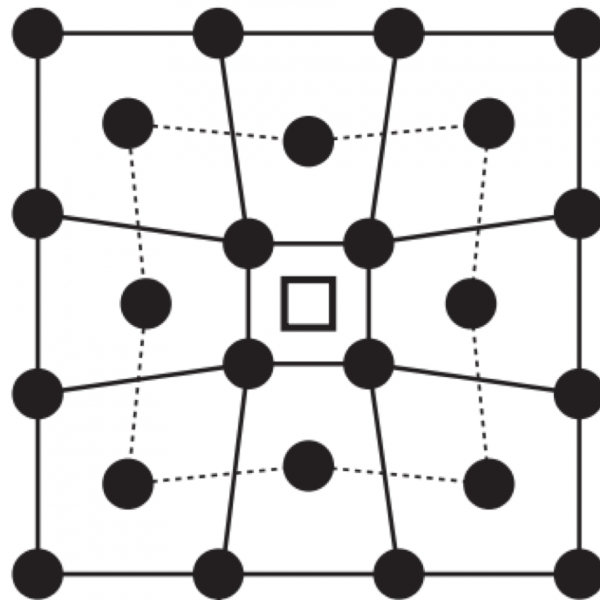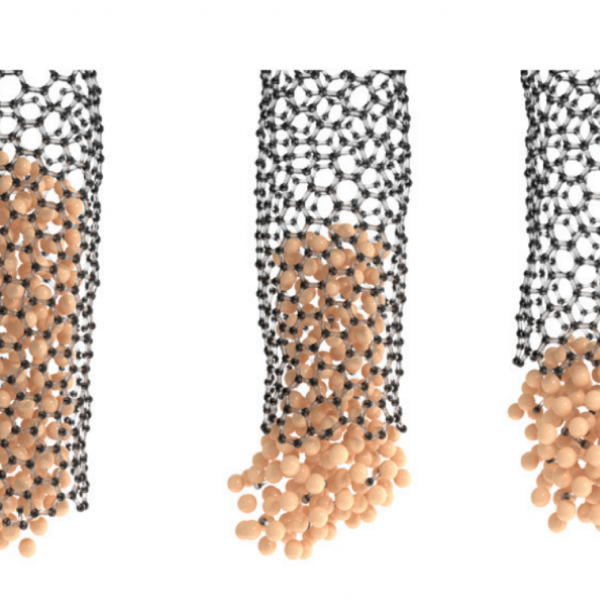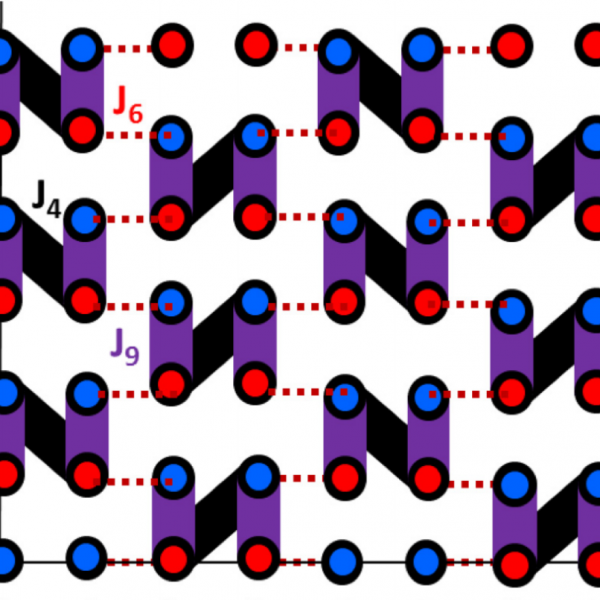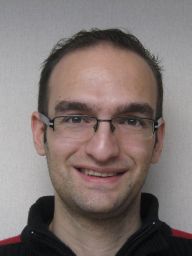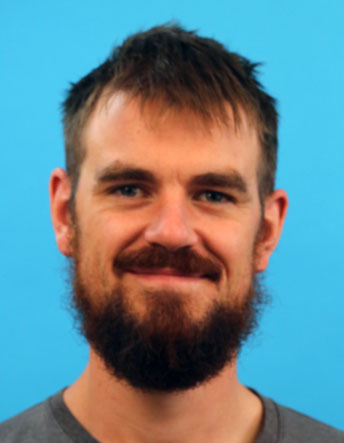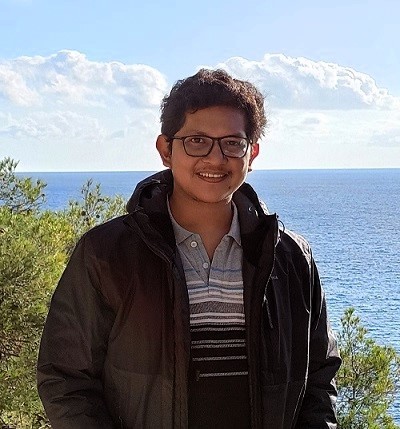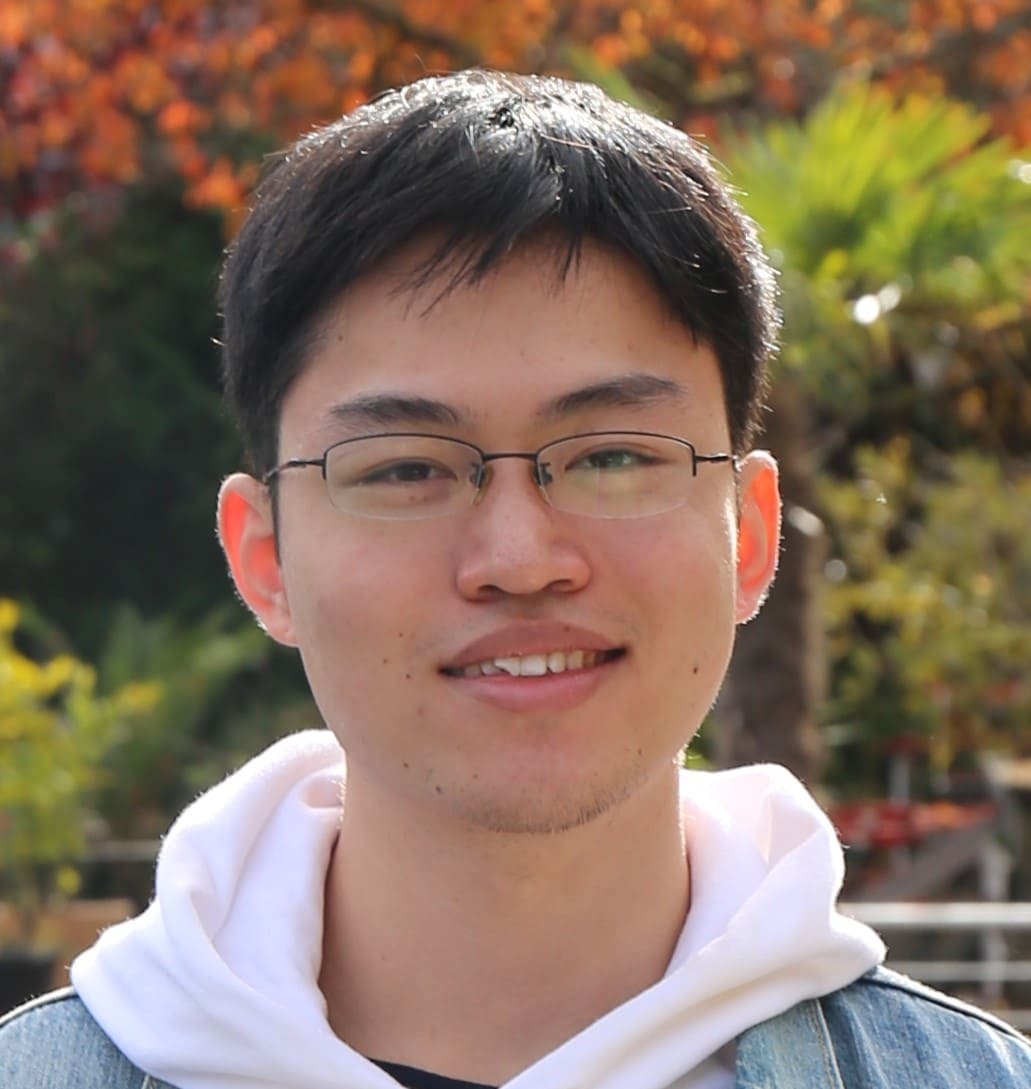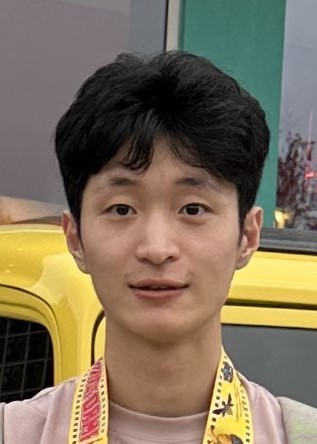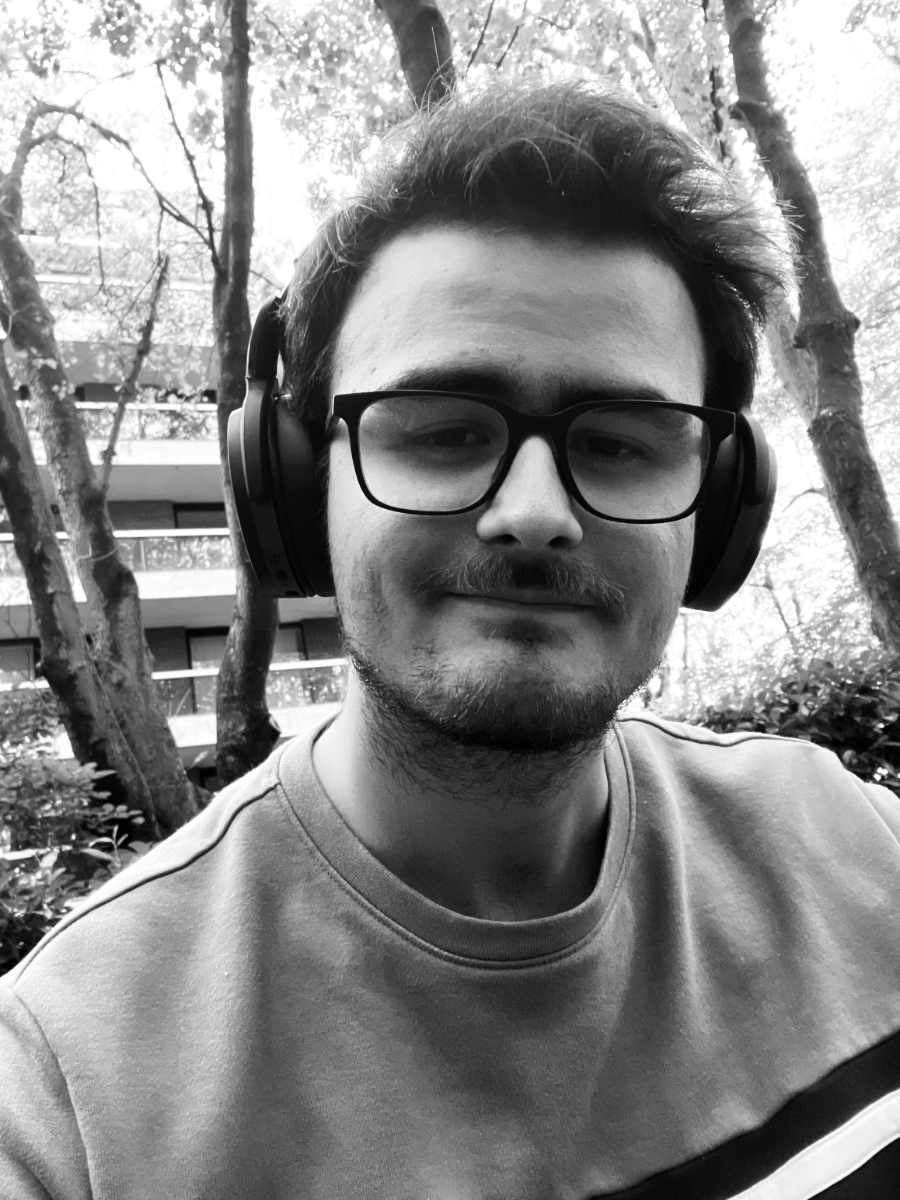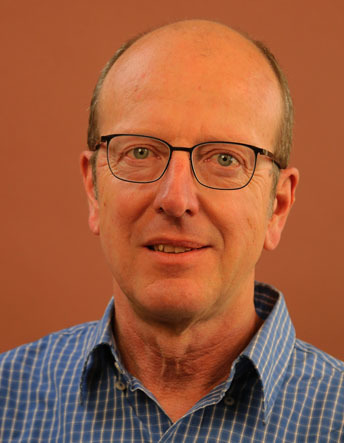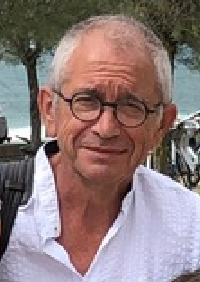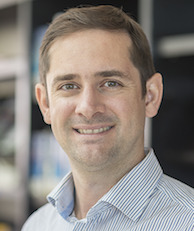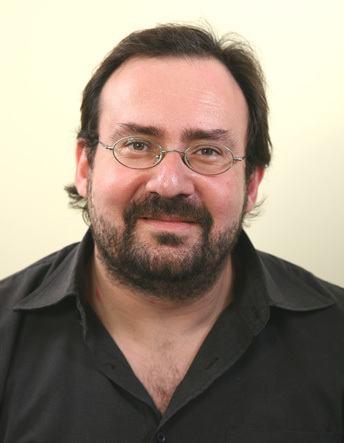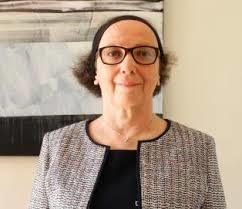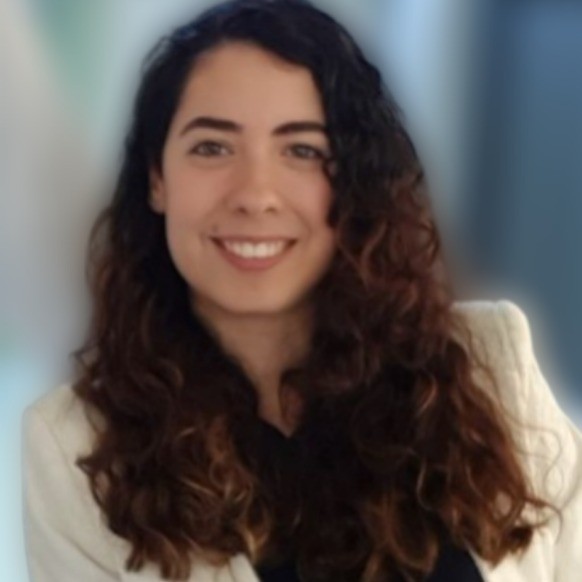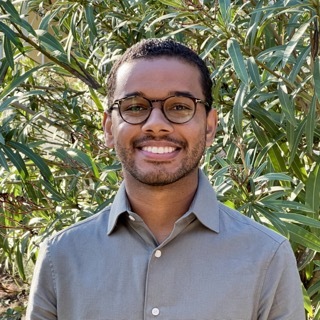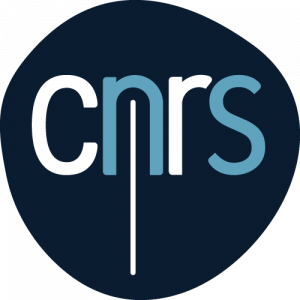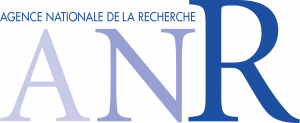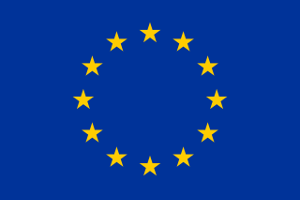- Introduction
- Themes
- People
- Publications
- Seminars
- Funding
- Facilities
- Collaborations
- Scientific Networks
2025
Giant and Anisotropic Enhancement of Spin‐Charge Conversion in Graphene‐Based Quantum System
Alberto Anadón, Armando Pezo, Iciar Arnay, Rubén Guerrero, Adrián Gudín, Alba Guio, Melissa Yactayo, Jaafar Ghanbaja, Julio Camarero, Aurelien Manchon, Sebastien Petit-Watelot, Paolo Perna, Juan‐carlos Rojas-Sánchez
Advanced Materials 37:2418541 (2025)10.1002/adma.202418541
Exploring parameter dependence of atomic minima with implicit differentiation
Ivan Maliyov, Petr Grigorev, T D Swinburne
npj Computational Materials 11:22 (2025)10.1038/s41524-024-01506-0
Moiré amplification of highly tunable shift current response in twisted trilayer graphene
Yuncheng Mao, Claudio Attaccalite, Diego García Ovalle
Physical Review B 111:195408 (2025)10.1103/PhysRevB.111.195408
Inverse Rashba Edelstein THz emission modulation induced by ferroelectricity in CoFeB/PtSe2/MoSe2//LiNbO3 systems
S. Massabeau, O. Paull, A. Pezo, F. Miljevic, M. Mičica, A. Grisard, P. Morfin, R. Lebrun, H. Jaffrès, S. Dhillon, J.-M. George, Matthieu Jamet, M. Bibes
APL Materials 13:041102 (2025)10.1063/5.0256072
Orbital Diffusion, Polarization, and Swapping in Centrosymmetric Metals
Xiaobai Ning, A. Pezo, Kyoung-Whan Kim, Weisheng Zhao, Kyung-Jin Lee, Aurélien Manchon
Physical Review Letters 134:026303 (2025)10.1103/PhysRevLett.134.026303
Nano-carbon black (nCB)-dispersed cement composites: A macro-to-nano investigation revealing trade-offs between electrical conductivity and mechanical strength
Nancy Soliman, Katerina Ioannidou, Thibaut Divoux, Renal Backov, M. Omran, Traian Nîrca, Roland J.-M. Pellenq
Construction and Building Materials 489:142246 (2025)10.1016/j.conbuildmat.2025.142246
Parameter uncertainties for imperfect surrogate models in the low-noise regime
Thomas Swinburne, Danny Perez
Machine Learning: Science and Technology 6:015008 (2025)10.1088/2632-2153/ad9fce
2024
Size and shape effects on chemical ordering in Ni–Pt nanoalloys
Pamela Camilos, Céline Varvenne, Christine Mottet
Physical Chemistry Chemical Physics 26:15192-15204 (2024)10.1039/D4CP00979G
Optical spectra of silver clusters and nanoparticles from 4 to 923 atoms from the TDDFT+U method
Mohit Chaudhary, Hans-Christian Weissker
Nature Communications 15:9225 (2024)10.1038/s41467-024-53428-6
Insights on the capabilities and improvement ability of classical many-body potentials: Application to α -zirconium
Alessandra del Masto, Jean Baccou, Guy Tréglia, Fabienne Ribeiro, Céline Varvenne
Computational Materials Science 231:112544 (2024)10.1016/j.commatsci.2023.112544
Non-relativistic torque and Edelstein effect in non-collinear magnets
Rafael González-Hernández, Philipp Ritzinger, Karel Výborný, Jakub Železný, Aurélien Manchon
Nature Communications 15:7663 (2024)10.1038/s41467-024-51565-6
Pressure and temperature diagram of C60 from atomistic simulations
Karim Hakim, Romain Dupuis, Christophe Bichara, R.-J.-M. Pellenq
The Journal of Chemical Physics 161 (2024)10.1063/5.0213022
Dynamics of growing carbon nanotube interfaces probed by machine learningenabled molecular simulations
Daniel Hedman, Ben Mclean, Christophe Bichara, Shigeo Maruyama, J. Andreas Larsson, Feng Ding
Nature Communications 15:4076 (2024)10.1038/s41467-024-47999-7
DFT study on Mo-stabilized passive films: Hydroxylation effects on chromium and iron oxide surfaces
Xian Huang, Dominique Costa, Boubakar Diawara, Vincent Maurice, Philippe Marcus
Corrosion Science 233:112105 (2024)10.1016/j.corsci.2024.112105
Quantifying the large contribution from orbital Rashba–Edelstein effect to the effective damping-like torque on magnetization
S. Krishnia, B. Bony, E. Rongione, L. Moreno Vicente-Arche, T. Denneulin, A. Pezo, Y. Lu, R. Dunin-Borkowski, S. Collin, A. Fert, J.-M. George, N. Reyren, V. Cros, H. Jaffrès
APL Materials 12 (2024)10.1063/5.0198970
Reconfigurable spin current transmission and magnon–magnon coupling in hybrid ferrimagnetic insulators
Yan Li, Zhitao Zhang, Chen Liu, Dongxing Zheng, Bin Fang, Chenhui Zhang, Aitian Chen, Yinchang Ma, Chunmei Wang, Haoliang Liu, Ka Shen, Aurélien Manchon, John Xiao, Ziqiang Qiu, Can-Ming Hu, Xixiang Zhang
Nature Communications 15:2234 (2024)10.1038/s41467-024-46330-8
Crystal Symmetry-Dependent In-Plane Hall Effect
Liang Liu, Armando Pezo, Diego García Ovalle, Chenghang Zhou, Qia Shen, Hongliang Chen, Tieyang Zhao, Weinan Lin, Lanxin Jia, Qihan Zhang, Hengan Zhou, Yumeng Yang, Aurélien Manchon, Jingsheng Chen
Nano Letters 24:733-740 (2024)10.1021/acs.nanolett.3c04242
Van der Waals epitaxy of Weyl-semimetal Td-WTe2
Alexandre Llopez, Frédéric Leroy, Calvin Tagne-Kaegom, Boris Croes, Adrien Michon, Chiara Mastropasqua, Mohamed Al Khalfioui, Stefano Curiotto, Pierre Müller, Andrés Saúl, Bertrand Kierren, Geoffroy Kremer, Patrick Le Fèvre, François Bertran, Yannick Fagot-Revurat, Fabien Cheynis
ACS Applied Materials & Interfaces 16:20878-20885 (2024)10.1021/acsami.4c00676
Magnetic structure of a multiferroic compound: Cu2OCl2
Julien Lévêque, Elisa Rebolini, Andrés Saúl, Marie-Bernadette Lepetit
Faraday Discussions 254:612-627 (2024)10.1039/D4FD00042K
Why the pyrochlore-like antiferromagnet NaCu3F7 is magnetically non-frustrated
Julien Lévêque, Elisa Rebolini, Marie-Bernadette Lepetit, Andrés Saúl
Journal of Physics: Condensed Matter 36:415803 (2024)10.1088/1361-648X/ad5d39
Charge pumping with strong spin-orbit coupling: Fermi surface breathing, Berry curvature, and higher harmonic generation
Aurélien Manchon, Armando Pezo
Physical Review B 109:184409 (2024)10.1103/PhysRevB.109.184409
Spin current leakage and Onsager reciprocity in interfacial spin-charge interconversion
Aurélien Manchon, Shuyuan Shi, Hyunsoo Yang
Physical Review B 109:094424 (2024)10.1103/PhysRevB.109.094424
Orbital Kerr effect and terahertz detection via the nonlinear Hall effect
Diego García Ovalle, Armando Pezo, Aurélien Manchon
Physical Review B 110:094439 (2024)10.1103/PhysRevB.110.094439
Reply to Lee and Elliott: Changes of bonding upon crystallization in phase change materials
Jean-Yves Raty, Christophe Bichara, Carl-Friedrich Schön, Carlo Gatti, Matthias Wuttig
Proceedings of the National Academy of Sciences of the United States of America 121 (2024)10.1073/pnas.2405294121
Tailoring chemical bonds to design unconventional glasses
Jean-Yves Raty, Christophe Bichara, Carl-Friedrich Schön, Carlo Gatti, Matthias Wuttig
Proceedings of the National Academy of Sciences of the United States of America 121 (2024)10.1073/pnas.2316498121
Impact of magnon interactions on transport in honeycomb antiferromagnets
Konstantinos Sourounis, Aurélien Manchon
Physical Review B 110:054429 (2024)10.1103/PhysRevB.110.054429
Optical Properties of AgAu Alloy Clusters: Effect of Chemical Configuration along a Rearrangement Pathway
Hans-Christian Weissker, Florent Calvo
Alloys 3:31-42 (2024)10.3390/alloys3010003
Manipulation of perpendicular magnetization via magnon current with tilted polarization
Dongxing Zheng, Yan Li, Chen Liu, Jin Lan, Chao Jin, Qingxiao Wang, Linxing Zhang, Guoqiang Xi, Bin Fang, Chenhui Zhang, Hanin Algaidi, Aitian Chen, Xiang Liu, Gen Yin, Zijian Xu, John Xiao, Aurélien Manchon, Xixiang Zhang
Matter 7:3489-3499 (2024)10.1016/j.matt.2024.05.045
Collective molecular-scale carbonation path in aqueous solutions with sufficient structural sampling: From CO2 to CaCO3
Xinping Zhu, Romain Dupuis, Roland J.-M. Pellenq, Katerina Ioannidou
The Journal of Chemical Physics 161:184502 (2024)10.1063/5.0228805
Topological band engineering and tunable thermal Hall effect in trimerized Lieb lattice ferromagnets
Fengjun Zhuo, Jian Kang, Zhenxiang Cheng, Aurélien Manchon
Physical Review B 109:054412 (2024)10.1103/PhysRevB.109.054412
Récents
-
L’interaction entre molécules diatomiques et des agrégats nanométriques de métaux de transition : quelques avancées
Dr. Dominique Bazin Institut de Chimie Physique (Université Paris-Saclay Sud, Orsay), 25th Febraury 2025, 09:30h Salle R1.
-
Physics inspired machine learning at the atomic scale
Dr. Martin Urhín EPFL, Mardi 19 novembre 2024 à 10h30* en salle R1 (CINaM).
-
Chemical ordering in Ni-Pt and Co-Ni-Pt nanoalloys
Pamela Camilos CINaM, 8th October 2024, 11:30h Salle R1.
-
Structure and Dynamics of the Interface of Growing Carbon Nanotubes
Christophe Bichara CINaM, 17 September 2024, 14:00h Salle R1.
-
From moiré to moiré-of-moiré states and their topologies in helical twisted trilayer graphene
Yuncheng Mao CINaM, 28 June 2024, 11:30h Salle R3.
-
Exciton Dissociation by Topological Edge States
Prof. Udo Schwingenschloegl KAUST (Saudi Arabia), 13 Mai 2024, 11h Salle R1.
-
The electronic structure of actinides tailored by relativistic quantum chemistry approaches: applications to X-ray spectroscopies
Wilken Aldair Misael CINaM, 13 Feb 2024, 11h Salle R1.
-
Theory of "spin current" generation and propagation without talking about spin current
GEN TATARA RIKEN Center for emergent matter science, 16 Janvier 2024, 11h Salle R1.
Old seminars
-
A quick dive in the grain boundary universe
Carolina Baruffi (École Polytechinique Fédérale de Lausanne), 24 Octobre 2022, 11h Salle Kern.
-
Functional Materials by Desing : Developing Treasure Maps with Quantum Chemistry
M. Wuttig (RWTH Aachen University of Technology, Germany), 6 Octobre 2022, 11h Salle Kern.
-
Mobility of gated TMDs as a function of valley profile
Thibaut Sohier (Laboratoire Charles Coulomb (L2C), 16 Septembre 2022, 11h Salle Kern.
-
Amorphous 2D Materials for Applications in Nanoelectronics and Neuromorphic Computing
Stéphane Roche (ICN2, Barcelone) 16 juin 2022, 14h Salle Kern
-
Growth kinetics of individual carbon nanotubes studied by in situ optical microscopy
Vladimir PIMONOV 15 Decembre 2021.
-
The Physics Surrounding the Intrinsic Nonlinear Hall Effect
Diego Garcia Ovalle (CINaM) 30 juin 2022, (online)
-
Vacancy mediated formation of the omega phase in bcc Ti and Zr metals through ab initio calculations
Sally Issa (CINaM) 30 juin 2022, (online)
-
In search of High temperature multiferroics
Julien Leveque (CINaM) 22 juin 2022, (online)
-
Apprentissage statistique pour la détermination de l'indice chiral des nanotubes de carbone dans les images HRTEM
Daniel FÖRSTER (CINaM ), 25 février 2020, 10h30 salle R2
-
Time-dependent transport in nanosystems interacting with light
Fabienne MICHELINI (IM2NP, Aix-Marseille Université), 28 janvier 2020
-
Transition d'échelle entre fibre végétale et composite UD : propagation de la variabilité et des non-linéarités
Alessandra Del Masto(IRSN / CINaM ), 28 janvier 2020
-
Ab initio study of photo-responsive metal-organic frameworks for an efficient carbon capture
Kshirsagar Aseem Rajan (CNRS / SIMaP Grenoble ), 21 janvier 2020
-
Phase Change Materials : Characterisation and implications of "Metavalent" Bondinghe intrinsic dimension of the data and its use
J.Y. Raty (Université de Liège ), 2 décembre 2019
-
The story of academic publishing: from Galileo to Nature
C. Attaccalite (CINaM ), 21 novembre 2019
-
The intrinsic dimension of the data and its use
M. Allegra (Institut de Neurosciences de la Timone ), 5 novembre 2019
-
(Bio)chemical reactions across soft fluctuating surfaces: from statistical mechanics to cell biology and back
K. Sengupta (CINaM), 22 octobre 2019
-
Local yield stress statistics in model amorphous solids
S. Patinet (PMMH, ESPCI Paris), 11 septembre 2019
-
On the origin of line-tension in the core of a dislocation
M. Boleininger (Culham Centre for Fusion Energy, UK) , 9 septembre 2019
-
Nanostructured materials for optoelectronics
B. Sciacca (CINaM), 25 juin 2019
-
Floating catalyst chemical vapor deposition (FC-CVD) synthesis of conductive SWNT thin films for flexible electronics applications
Esko I. Kauppinen (Aalto University School of Science, Department of Applied Physics, Finlande), 5 mai 2019
-
Solid/Liquid Interfaces: Structure, dynamics and spectroscopy
Marialore Sulpizi (Johannes Gutenberg University Mainz, Germany), 23 avril 2019
-
Theoretical spectroscopy for solids
Arjan Berger (Laboratoire de Chimie et Physique Quantiques, Université Paul Sabatier, Toulouse), 12 avril 2019
-
Spin-Orbit Physics at Magnetic Interfaces
Aurelien Manchon (King Abdullah University of Science and Technology -KAUST-, Saudi Arabia), 10 avril 2019
-
Durée de vie du phonon et propriétés thermiques dans le graphène irradié : un traitement exact du désordre
Georges Bouzerar (Institut Lumière Matière, Université Lyon 1), 9 avril 2019
-
Hydrogène, surfaces, nano et micro-vides dans les matériaux pour la fusion nucléaire: Etude DFT, modèles thermodynamiques, comportement macroscopique
Yves Ferro (PIIM, Marseille), 20 mars 2019
-
The silver route to high-Tc superconductivity
José Lorenzana (Istituto dei Sistemi Complessi, CNR, La Sapienza, Roma), 19 mars 2019
-
Zwitterionic Quinones : an Unprecedented Class of Coupled Polymethines
Simon Pascal (CINaM), 26 février 2019
-
Synthèse d’une bicouche de silice pour la modélisation de zéolithes - Etude des défauts de la surface de Cu2O(100)
Héloïse Tissot (CINaM), 19 février 2019
-
Ab-initio methods for electronic spectroscopy : Applications to bulk and layered semiconductors
Lorenzo Sponza (LEM, Onera-CNRS, Châtillon), 5 février 2019
-
Stratégies autonomes, guidées par une incertitude quantifiée, pour la construction de modèles mésoscopiques à partir des simulations atomiques
Tom Swinburne (CINaM), 22 janvier 2019
-
Soutenance de thèse : Modélisation de nanoalliages à base de Pt : Co-Pt, système emblématique de l’ordre, et Pt-Ag, système hybride entre ordre et démixtion
Alexis Front (CINaM), 20 décembre 2018
-
Modélisation à l’échelle atomique du système Fe-Al-Mn-C à l’aide de modèles de paires et de calculs thermodynamiques
Rémy Besson (UMET, Université de Lille, Villeneuve d’Ascq), 18 décembre 2018
-
Soutenance de thèse : Caractérisation de l’ordre chimique interstitiel des hydrures de zirconium à l’aide d’un modèle d’Ising effectif dérivé des liaisons fortes
Paul Eymeoud (CINaM), 17 décembre 2018
-
Simulation of fast and ultrafast structural changes in solids and biomolecules upon interaction with light
Martin Garcia (Universität Kassel, Germany), 4 décembre 2018
-
Spectroscopie Raman des polymères de coordination Nickel/quinone
Romain Parret (CINaM), 6 novembre 2018
-
Advanced engineering materials with tailored functionality at the nanoscale : Insights from computer simulations & nanoscale experiments
Christian Brandl (KIT, Karlsruhe, Germany), 6 septembre 2018
-
Surface energies of bimetallic nanoparticles : size and composition effects
Hakim Amara (LEM, CNRS-Onera, Châtillon), 19 juin 2018
-
Virgin martensite in Fe-Ni-C alloys : low-temperature and spinodal decomposition
Philippe Maugis (IM2MP, Marseille), 12 juin 2018
-
Computational study of free and oxyde-supported Au-Rh and Pd-Ir nanocatalysts
Roy L. Johnston (University of Birmingham, UK ), 5 juin 2018
-
Spectroscopie théorique d’agrégats de métaux nobles (soutenance HDR)
Hans-Christian Weissker (CINaM), 4 juin 2018
-
Utilisation des méthodes de champs de phases en métallurgie physique
Héléna Zapolsky (GPM, Rouen), 30 mai 2018
-
Étude thermodynamique et mécanique des alliages à haute entropie basés sur le système CoCrFeMnNi
Guillaume Bracq (ICMPE, Thiais), 4 mai 2018
-
Aller ou non vers l’équilibre dans les nano-alliages ?
Pascal Andréazza (ICMN, Orléans), 19 avril 2018
-
Modeling of plasma surface interactions
Ning Ning (PIIM, Marseille), 9 avril 2018
-
The importance of geometry to predicting properties of metallic nanoparticles
Francesca Baletto (King’s College, London, England), 26 mars 2018
-
Descriptions Théoriques des Structures Electroniques
Vincent Robert (Laboratoire de Chimie Quantique, Strasbourg), 23 mars 2018
-
Invisible excitations in hexagonal boron nitride
Claudio Attaccalite (CINaM), 20 février 2018
-
Soutenance de thèse : "Propriétés optiques d’agrégats de métaux nobles"
Rajarshi Sinha Roy (CINaM), 19 janvier 2018
-
Size effects in physically prepared metal nanoparticles
Matthias Hillenkamp (Institut Lumière Matière, Université Claude Bernard Lyon 1), 18 janvier 2018
Institutions providing financial support
Non exhaustive list of our scientific grants
-
ANR DAPREDIS (2024-2028)
Data-driven prediction of dislocation plasticity
T. Swinburne -
European Innovative Council (EIC Pathfinder Open) OBELIX (2024-2028)
Orbitronics for Innovative Electronics.
A. Manchon (PI), A. Saul -
ANR NEXT (2024-2027)
Magnetic exchange in 2D materials.
A. Manchon -
Aix-Marseille Institut d’Excellence program FRICTION (2024-2027)
Ferroelectric Rashba semiconductors for spin orbitronics.
A. Manchon, A. Saul, F. Cheynis (PI) -
Aix-Marseille Institut d’Excellence program INDIGENA (2024-2027)
Interfacial Design of Optical High-Harmonic Generation
A. Manchon (Co-PI), C. Attacalitte, F. Leroy (Co-PI), F. Cheynis (Co-PI) -
Ministry of Higher Education and Research (MESRI) PEPR SPIN (2023-2029)
Interfacial Design of Optical High-Harmonic Generation
A. Manchon, V. Cros (Co-PI), L. Prejbeanu (Co-PI) -
ANR HEBUTERNE(2023-2027)
Helium bubble formation in tungsten: from nanoscience understanding to macroscale impact
T. Swinburne Elodie BERNARD (PI), Fred Leroy. -
ANR COLIBRI (2023-2026)
CorreLated photoemIssion spectra from the three-body Green’s functIon
C. Attaccalite -
ANR YOSEMITE (2023-2026)
High entropy alloys nanoparticles for unique mechanical properties
C. Varvenne, T. Swinburne, C. Mottet -
ANR Superzic (2023-2026)
Super réseau sur graphène induit par auto-assemblage de zwitterions
A. Manchon -
CRG (2022-2025)
Synthetic topological matter in electric circuit networks
A. Manchon -
FLAG-ERA MNEMOSYN (Graphene Flagship) (2022-2025)
2D MagNEtic meMOries: Scalable growth and hYbrid electrical operatioN
A. Manchon -
ANR SCHNAPSS (2021-2026)
Single NanoAlloy Particle Structure and Spectroscopy
H. Weissker -
ANR SOHYPE (2021-2024)
Systèmes Optiques HYbrides Pilotés Electriquement
R. Parret, C. Attaccalite, V. Tishkova -
ANR DARWIN (2021-2024)
Boosting the chiral selectivity of nanotube growth by directed evolution
C. Bichara -
ANR ORION (2020-2025)
Orbitronique des structures non-centrosymmetriques
A. Manchon, A. Saul -
A*Midex (2020-2023)
Realistic quantum transport simulations for disruptive nanoelectronics
A. Manchon -
ANR MeMoPas (2020-2023)
Mesoscale models from massively parallel atomistic simulations: uncertainty driven, self-optimizing strategies for crystalline materials
T. Swinburne, C. Varevenne, C. Mottet, G. Treglia -
ANR HTHPCM (2020-2023)
High-temperature & high-polarization cuprate multiferroics
A. Saul, A. Zappelli -
ANR GIANT (2019-2022)
Sélectivité durant la croissance et application des nanotubes de carbone monoparoi
C. Bichara -
ANR CoCoA (2019-2022)
Controlled Computation of Point Defect Characteristics in High Entropy Alloys
C. Varvenne, G. Tréglia -
ANCRE PotEmQuIn (2019-2020)
Potentiels semi-empiriques avec quantification d'incertitudes
F. Ribeiro, G. Treglia, C. Varvenne -
Accord spécifique de collaboration IRSN/CINaM (2018-2020)
Vieillissement des aciers austénitiques: modélisation atomistique de la ségrégation cinétique
G. Tréglia -
ANR SESAME (2016-2019)
-
Projet NEEDS-CNRS (Nucleaire, Energie, Environnement, Dechets et Societe). (2016–2017)
Cement Radiolysis : reaction mechanisms.
A. Saul, S. Le Caer (PI). -
Accord spécifique de collaboration IRSN/CINaM (2015-2018)
Modélisation atomistique de la fragilisation des gainages combustibles nucléaires par les hydrures
G. Tréglia -
ANR FIT SPRINGS (2014-2017)
Des Transitions Individuelles aux Résonances Plasmon de Surface dans les Agrégats d'Or et d'Argent
H. Weissker -
ANR SYNAPSE (2014-2017)
-
Projet Européen (2013–2018)
Graphene Flagship
C. Bichara, C. Attaccalite -
ANR SIZHYP (2013–2018)
Influence de la contrainte appliquée sur la précipitation des hydrures de zirconium
G. Tréglia -
Projet Européen IRENA (2013–2017)
Indium REplaced by carbon Nanotube thin films
C . Bichara -
ANR TEAM (2012-2015)
New functionalities of tellurium based amorphous materials
C. Bichara -
Accord spécifique de collaboration IRSN/CNRS et Bourse Doctorale Région PACA/entreprise (2011-2014)
Fragilisation des gainages combustibles nucléaires par les hydrures : études par des approches atomistiques
G. Tréglia -
ANR SOS Nanotubes (2010-2013)
Selective and Optimized Synthesis of Nanotubes
C. Bichara -
ANR SimNanA (2009-2011)
Simulations numériques de Nanoalliages ou Alliages bimétalliques de dimension réduite : des surfaces aux agrégats
C. Mottet -
Convention de partenariat, contrat de thèse IRSN/CNRS-CINAM/AREVA (2009-2015)
Comportement des bulles de gaz intragranulaire dans les combustibles UO2: modélisation par des approches semi-empiriques
G. Tréglia -
ANR SUD (2009 - 2011)
Spintronique à Une Dimension
A. Saul, M. Viret (PI) -
ANR (2009 - 2011)
Dewetting of solid film
A. Saul, G. Trèglia, F. Leroy (PI) -
PICS with Universidad de San Martin (Argentine) (2009 - 2011)
Structure, magnetic and electronic properties of transition metals and their oxides
A. Saul -
ANR SODELOS (2008-2011)
Simulation et optimisation d’electrolytes organiques pour supercondensateurs
R. Pellenq -
ANR (2006 - 2008)
Atomistic simulation of the SiGe system
G. Trèglia, A. Saul, P. Pochet (PI) -
ANR OSiGe_SIM (2006 - 2008)
Self ordering of epitaxial films
A. Saul, O. Pierre-Louis (PI) -
Université de la Méditerranée. (2004 - 2007)
Structure, morphology and magnetism of low dimensional systems
Andres Saul -
PICS with Argentine Atomic Energy Commission (2004 - 2006)
Structure, morphology and magnetism of low dimensional systems
A. Saul, Hugues Dreysse (PI) -
ECOS-SECYT with Argentine Atomic Energy Commission (2004 - 2006)
Structure, magnetic and electronic properties of bimetallic nanostructures
A. Saul -
European Program FORUM-FIB (2001 -2003)
Fabrication of SiGe based memory
A. Saul, I. Berbezier (PI) -
ECOS-SECYT with Instituto Balseiro (Bariloche, Argentine) (1998 - 2001)
Study of the morphology and electronic structure of metallic and semiconducting surfaces
A. Saul, G. Treglia -
CNRS-CONICET with the Argentine Atomic Energy Commission (1998 - 2000)
Self-diffusion on the Si(100) surface
A. Saul
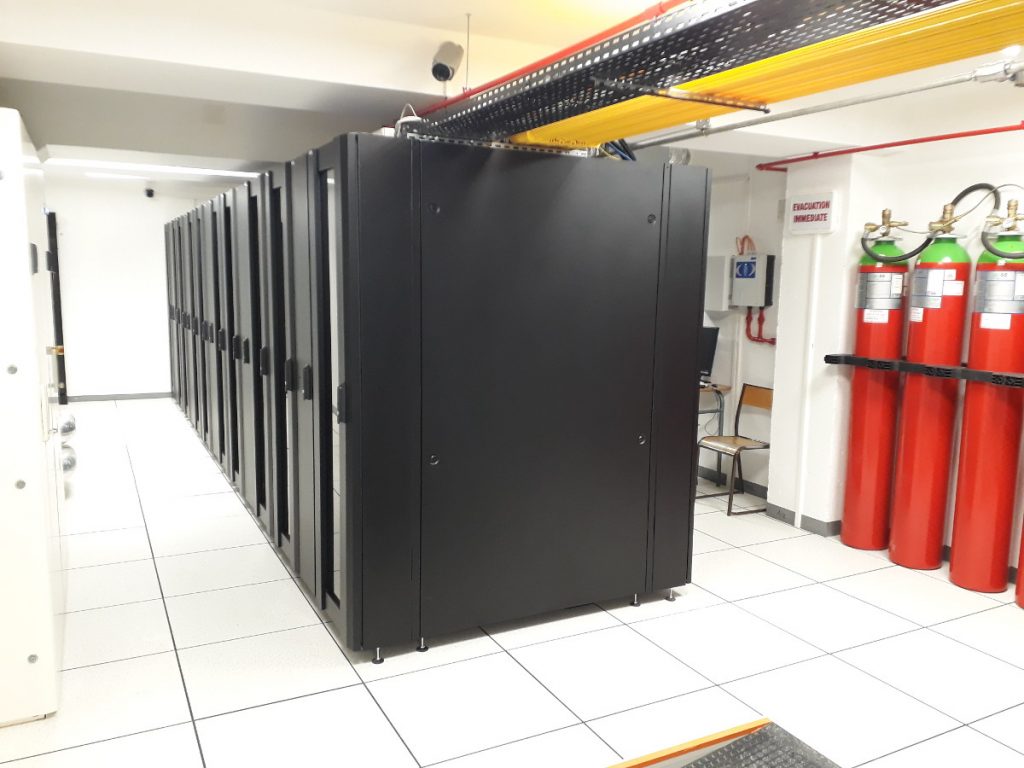
Scientific computing center
The department owns a computer cluster hosted in a shared room of the Aix-Marseille University at the Luminy campus. This computing resource can be used by any person of CINaM and it is also open to our collaborators outside the lab.
Nearly 2300 computing cores distributed over 100 machines are available to run scientific codes in sequential or parallel mode.
The codes are developed internally or use reference codes in our areas of predilection.
CINaM
- Suzanne Giorgio
- Claude Henry
- Angèle Ricolleau
- Daniel Vielzeuf
- Romain Parret
- Lisa Michez
- Frédéric Fagès
- Anthony D'Aleo
- Thomas Léoni
- Conrad Becker
France
- Hakim Amara (LEM, CNRS / ONERA)
- Mathilde Laurent-Brocq (ICMPE, CNRS / Univ. Paris-est)
- Guillaume Radtke (IMPMC, Sorbonne Université)
- Pascal Andreazza (ICMN, CNRS / Univ. Orléans)
- Caroline Andreazza (ICMN, CNRS / Univ. Orléans)
- Joel Puibasset (ICMN, CNRS / Univ. Orléans)
- François Ducastelle (LEM, CNRS / ONERA)
- Fabienne Berthier (ICCMO, CNRS / Univ. Paris)
- Jérôme Creuze (ICCMO, CNRS / Univ. Paris)
- Christian Ricolleau (MPQ, CNRS / Univ. Paris Diderot)
- Sophie Le Caer (NIMBE, CEA / Univ. Paris Saclay)
- Xavier Rocquefelte (Univ. de Rennes)
- Marie-Bernadette Lepetit (Institut Néel, Grénoble)
- Matthias HILLENKAMP, Franck Rabilloud, Emmanuel Cottencin (iLM Lyon)
- Mathieu KOCIAK ( LPS Orsay)
Italy
- Maurizia Palummo and Olivia Pulci, Tor Vergata (University, Rome)
- Davide Sangalli (CNR, Milan)
- Giovanni Finocchio ( University of Messina)
- Riccardo Ferrando (Physics Department, University of Genoa, Gênes)
Spain
- Lluis Artus, Institut Jaume Almera (Barcelona)
- Pablo García González, Antonio Fernández Domingo (UAM)
- Stephan Roche, Sergio Valenzuela (ICN2 Barcelona)
- Antonio I. Fernández-Domínguez (Madrid)
Belgium
- Dr Jean Yves Raty (Université de Liège)
Germany
- Simone Sanna (Giessen University)
- Prof. Matthias Wuttig (RWTH Aachen University)
- Jörg Neugebauer (Max Planck Eisenforschung)
- Mathias Klaui (Universität Johannes Gutenberg Mainz)
Luxembourg
- Ludger Wirtz (University of Luxembourg)
Switzeland
- William A. Curtin (LAMMM, EPFL Lausanne)
United Kingdom
- Myrta Gruning (Queen's University Belfast)
- Jorge Kohanoff (Queen's University Belfast)
- Bartomeu Monserrat (Cavendish Laboratory, University of Cambridge)
- Patrick Burr, Marc Weinmann (Imperial College London)
- David Wales (U Cambridge)
Australia
- Prof. Alister Page (University of Newcastle)
Japan
- Prof. Shigeo Maruyama (University of Tokyo)
Finland
- Prof. Esko Kauppinen (Aalto University)
Singapore
- Jingsheng Chen (National University of Singapore)
Thailand
- Dr Stéphan DUBAS (Polymer Science group, The Petroleum and Petrochemical College Chulalongkorn University, Bangkok)
Tunisia
- Adnène Dhouib, Myriam Sansa, Abdelhay Zaïr (Université de Tunis)
- Moncef Said (Laboratoire de la Matière Condensée et Nanosciences, Faculté des Sciences de Monastir)
Saudi Arabia
- Udo Schwingenschlogl,Xixiang Zhang (KAUST)
Israel
- Eugene Rabkin (Technion, Haifa)
Canada
- Andrea Bianchi (Departement de Physique, Univ. de Montréal)
United States
- Marcelo Jaime (Los Alamos National Laboratory, NM)
- Robert Whetten (Arizona)
- X. López Lózano (San Antonio)
- Danny Perez (Los Alamos National Laboratory)
- Satoru Emori (Virginia Tech)
Groupements De Recherche
- GDR Howdi: HétérO-structures de van der Waals de basse dimensionalité, 2020-2025, C. Attaccalite
- GDR High Entropy alloys (HEA), 2019-2022. C. Varvenne
- GDR International Nanoalloys, 2019-2022. C. Mottet
- GDR Rencontre de spectroscopie électronique (REST), 2015-2018. H. Weissker, C. Attaccalite
- GDR Modélisation des matériaux (ModMat), 2012-2019. G. Tréglia
- GDR Nanoalliages : synthèse, structure et propriétés, 2008-2015. C. Mottet
